(419) Hanazono Valley
文字数 3,020文字
Hanazono-Hananuki Prefectural Natural Park(花園花貫県立自然公園), located in the northern part of Ibaraki, is the largest natural park in the prefecture, with an area of approximately 25,000 ha.
Last year, in 2022, we went to Hananuki Valley. I wrote about that trip in Chapter 240.
This year, in 2023, we went to Hanazono Valley. There is no parking lot there, so we first visited Hanazono Shrine along a tributary of the Hanazono River, where there is a parking lot. Afterwards, we appreciated the autumn leaves of Hanazono Valley from the car window.
The Hanazono River originates from Kameyaji Wetland(亀谷地湿原), which is located between Mt.Eizomuro (栄蔵室 882m) and Mt. Hanazono (798m), and forms a 4km V-shaped valley called “Hanazono Keikoku(Valley)” near Hanazono Shrine.
There is "Yoshiro Falls (与四郎の滝)" here. At the upper reaches of Hanazono Valley, the tributary Sarugashiro Valley joins, and this is also a famous spot for waterfalls and autumn leaves, so we decided to extend our trip to Sarugashiro Valley.
Mt. Eizomuro (882m) is the highest mountain in Ibaraki Prefecture, surpassing Mt. Tsukuba (876m).
The word “Hanazono'' in “Hanazono Shrine” comes from the “Rhododendron colony of Mt. Hanazono''. Hanazono Shrine is said to have been founded in 795.
Every November, the autumn leaves at Hanazono Shrine are illuminated at night.
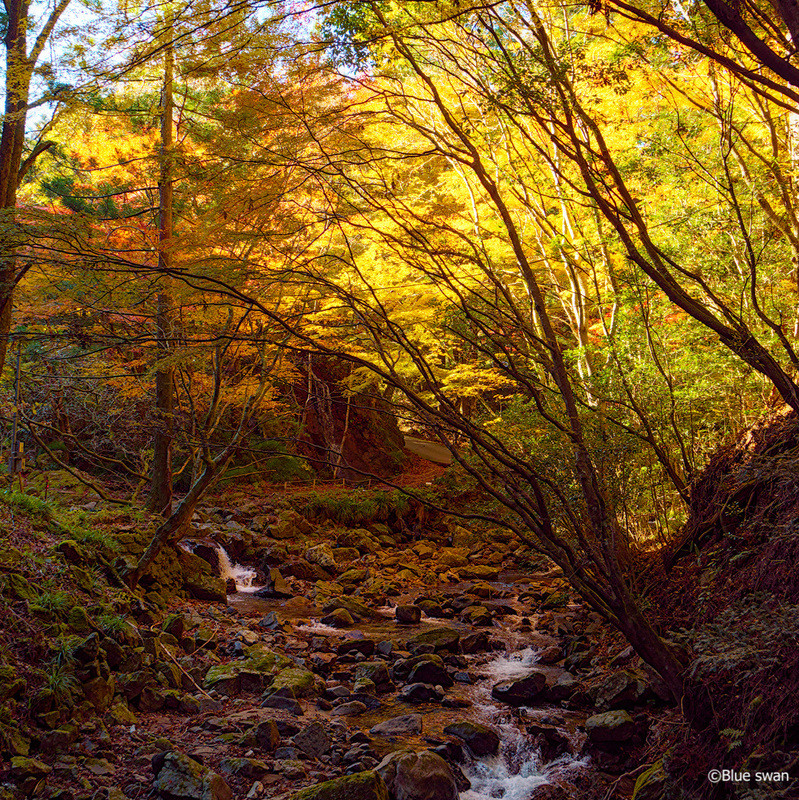
① This is a tributary of Hanazono River in front of Hanazono Shrine.

② I am in front of Sekizono Waterfall in Hanazono Shrine grounds. If you go to “Okunoin”, which is a 40-minute walk, you can see Nanatsu Falls (60m drop) on the way, but this time I’ll skip it.
※ “Okunoin” is a place located at the back of the main hall where the principal image and spirit statue are enshrined.
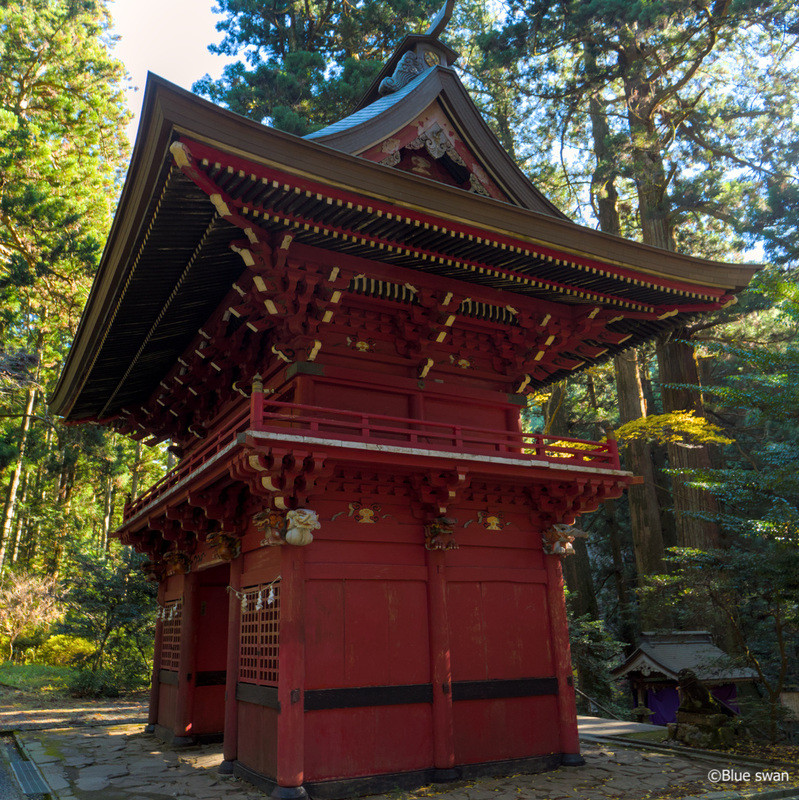
③ This is Romon (built in 1792).
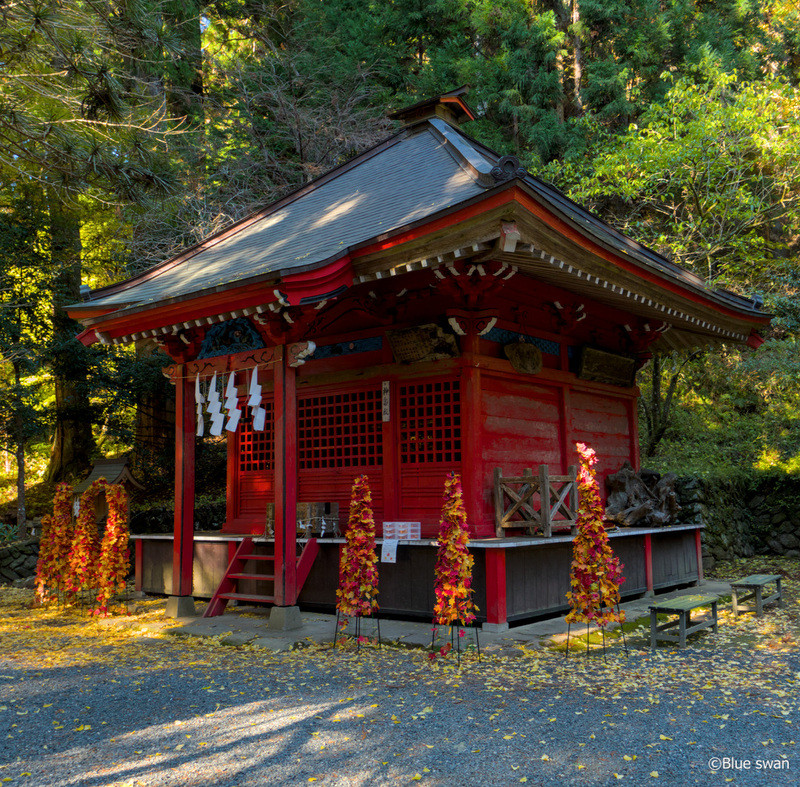
④ This is Kaguraden(神楽殿) or Kagura Hall. You can see some lamps decorated with autumn leaves, which are lit at night.
※”Kaguraden” is a building built on the grounds of a shrine for performing “Kagura(神楽)” that refers to a song and dance as an offering to the gods during Japanese Shinto rituals.

⑤ I am in front of a lamp decorated with autumn leaves.
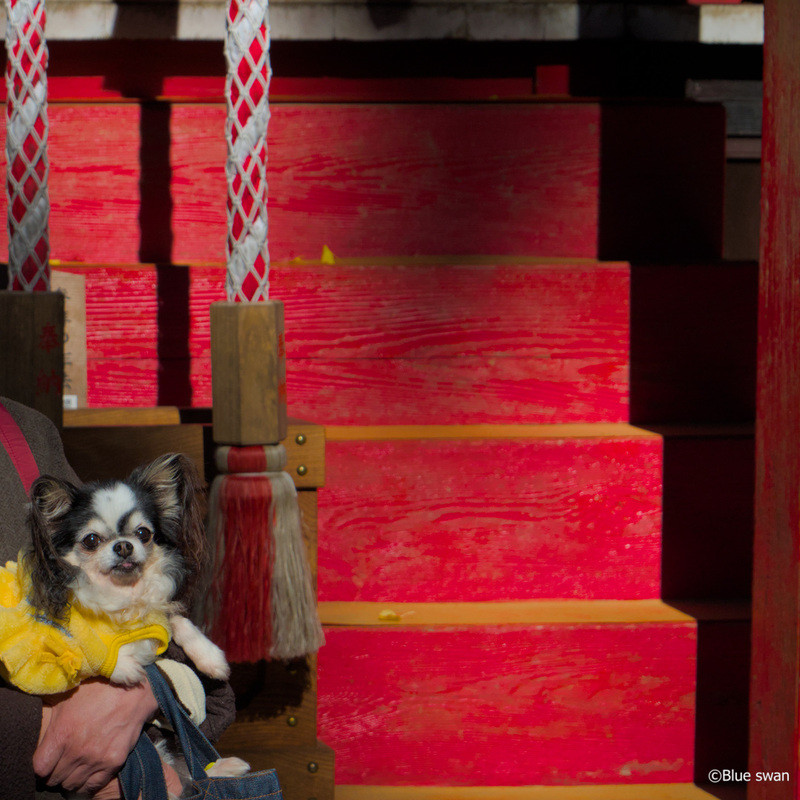
⑥ I am in front of the worship hall, which was rebuilt in 1851. Now, we’ll climb the stairs and head towards the main shrine.
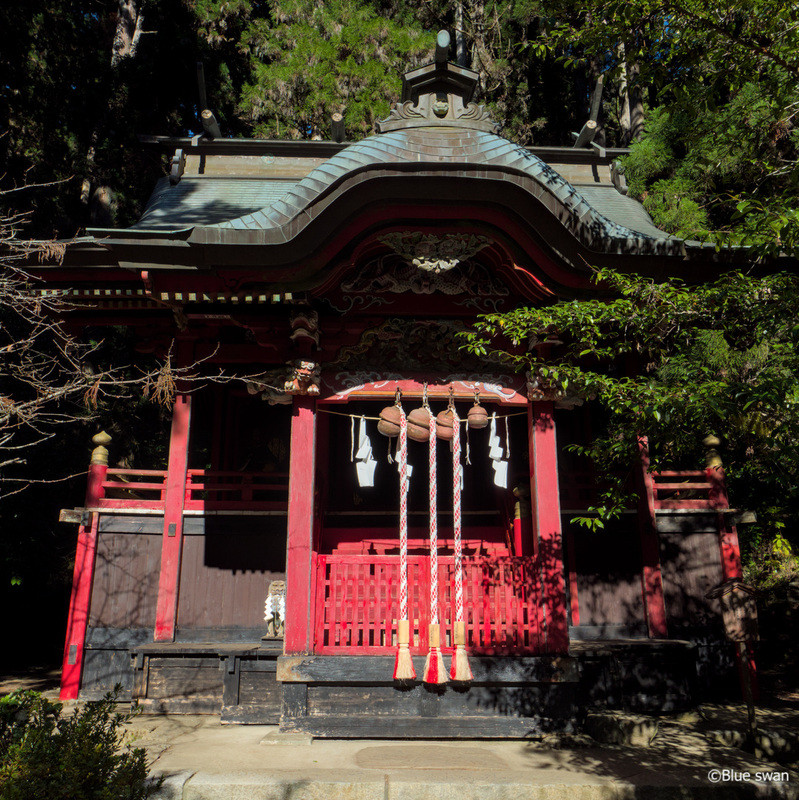
⑦ This is the main shrine, which was rebuilt in 1832.
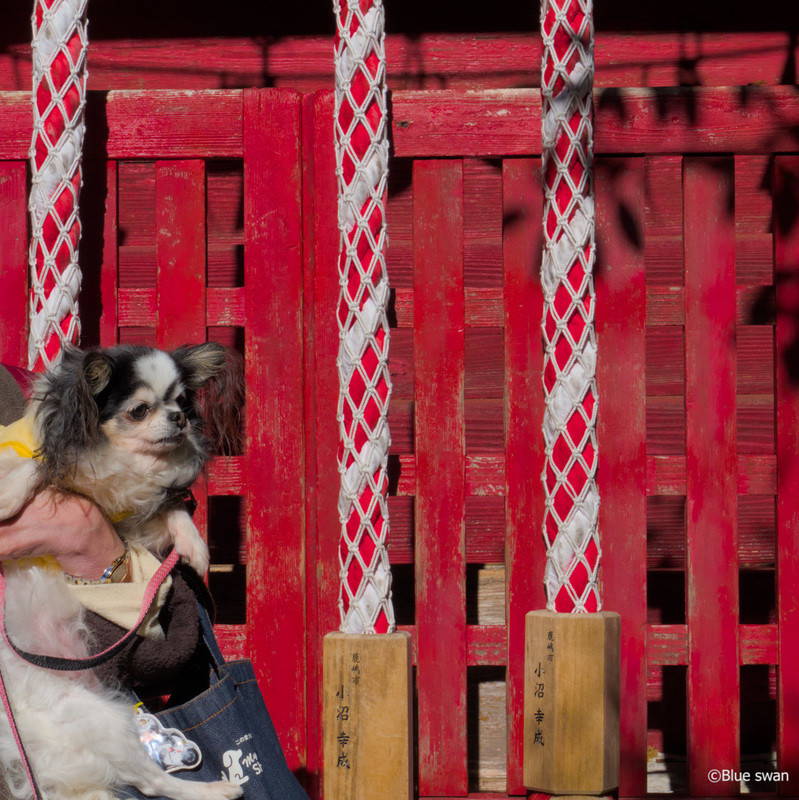
⑧ I am in front of the main shrine.
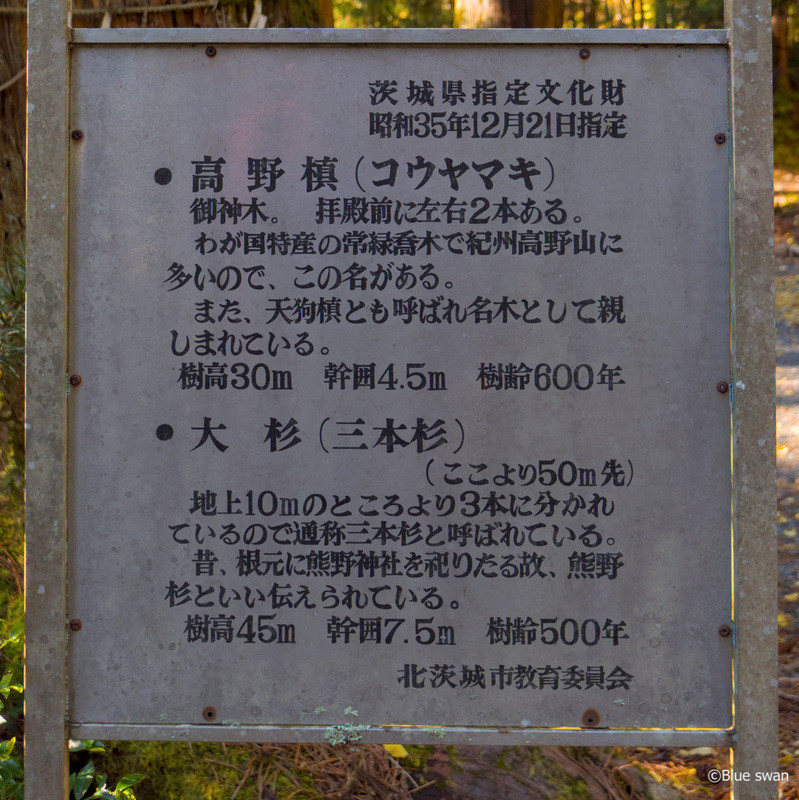
⑨ This is an explanation of old trees.
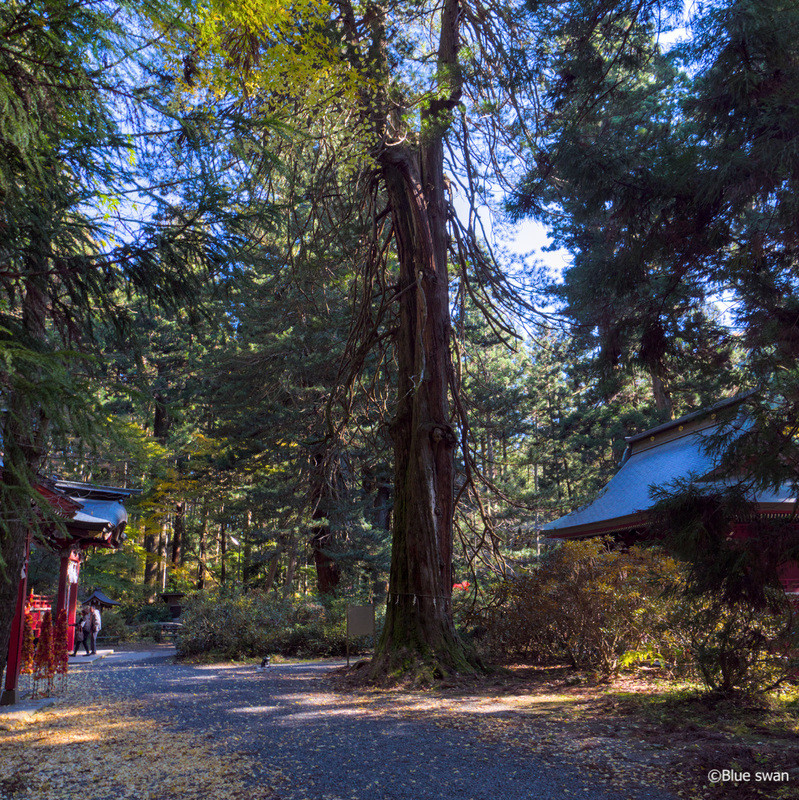
⑩ This is the 600-year-old Koya Maki tree (高野槙) (trunk circumference: 4.5m, height: 30m).
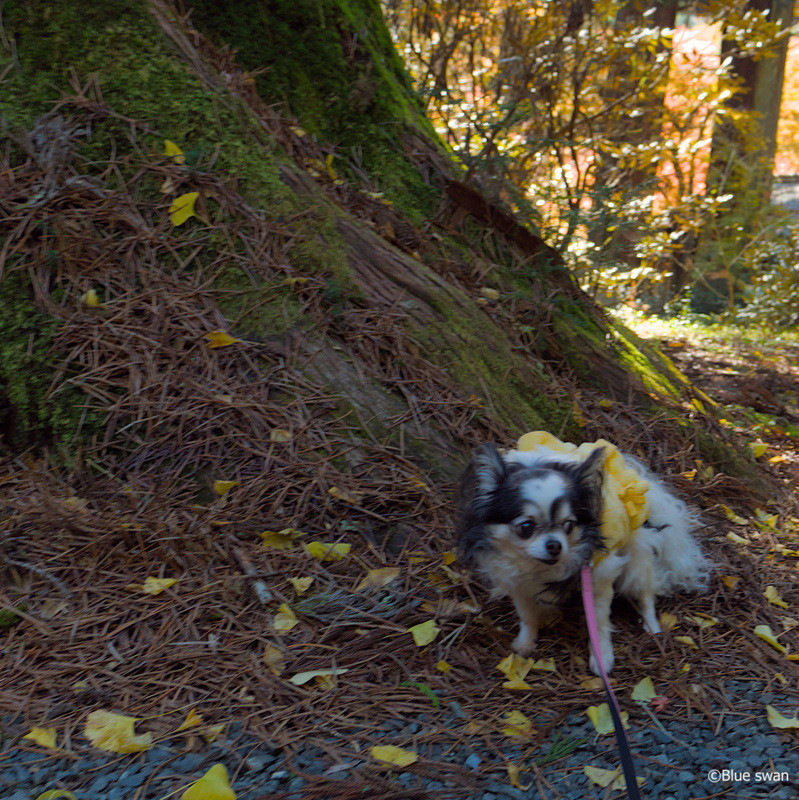
⑪ I am at the base of the Koya Maki tree (Sciadopitys verticillata, or, Japanese umbrella-pine).
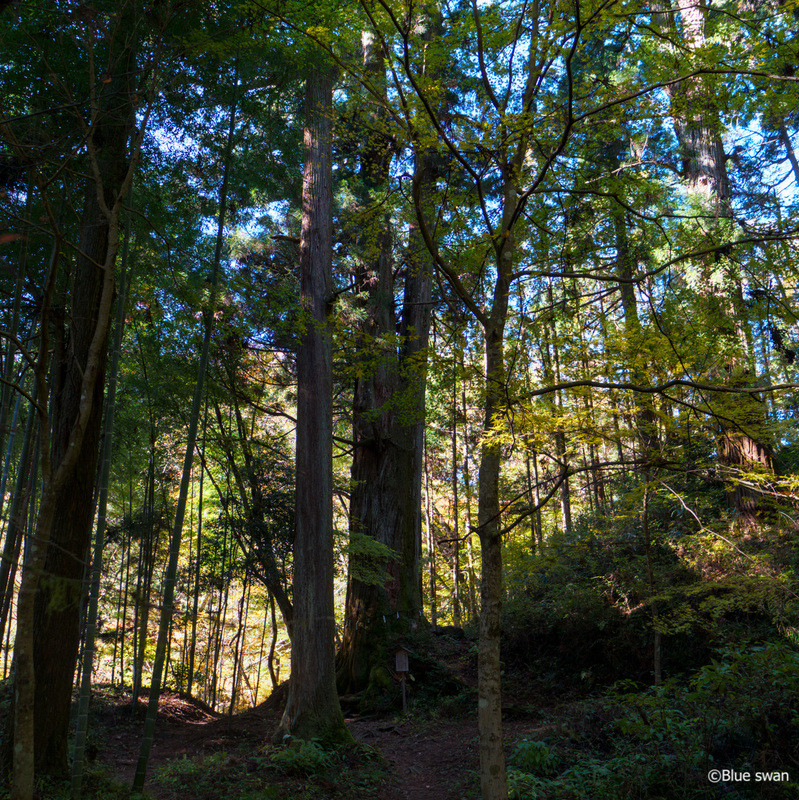
⑫ This is the 500-year-old Sanbonsugi (trunk circumference: 7.5m, height: 45m).
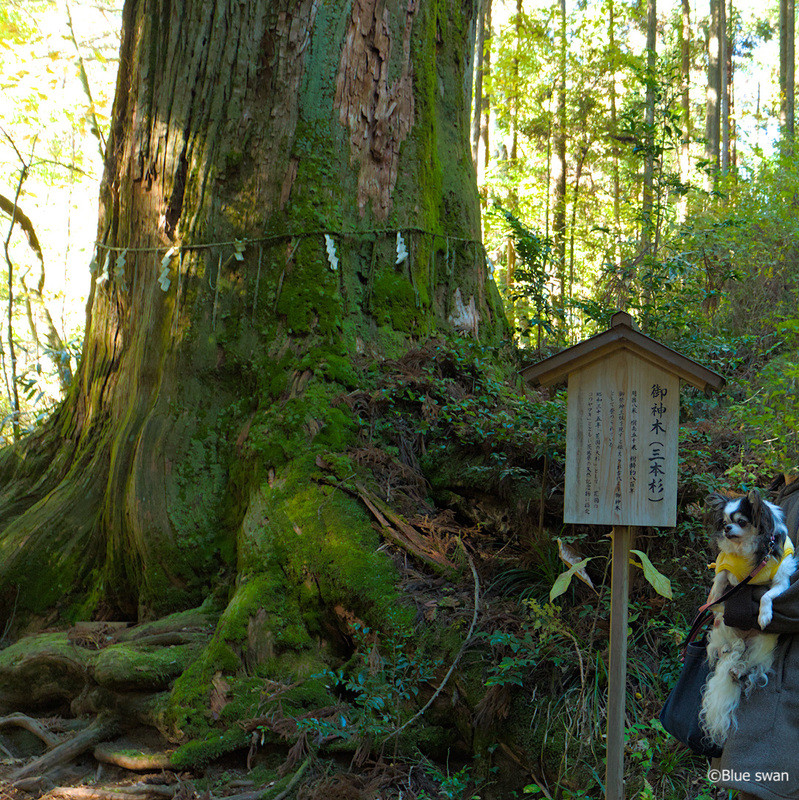
⑬ I am in front of the Sanbonsugi.
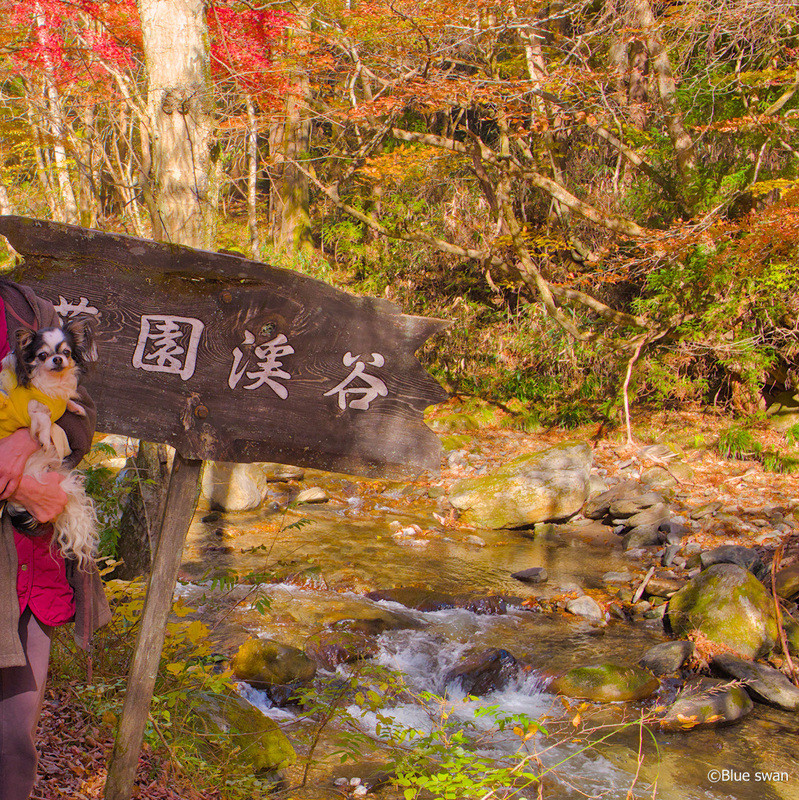
⑭ We've arrived at Hanazono Valley. Now, we'll climb up the valley by car.
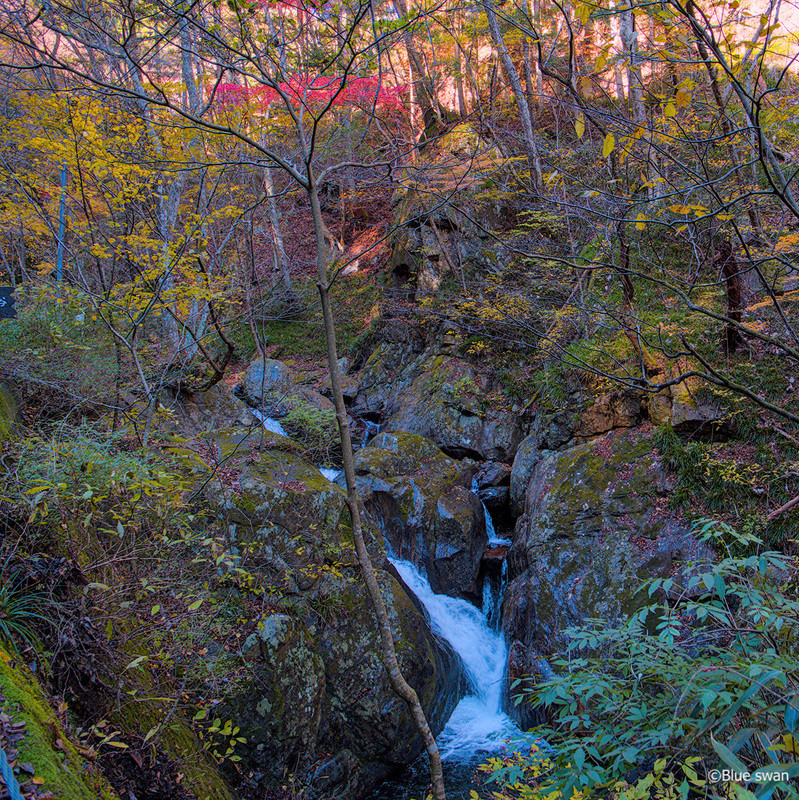
⑮ This is Yoshiro Falls.

⑯ This is Hanazono Valley seen from the top of the bridge.
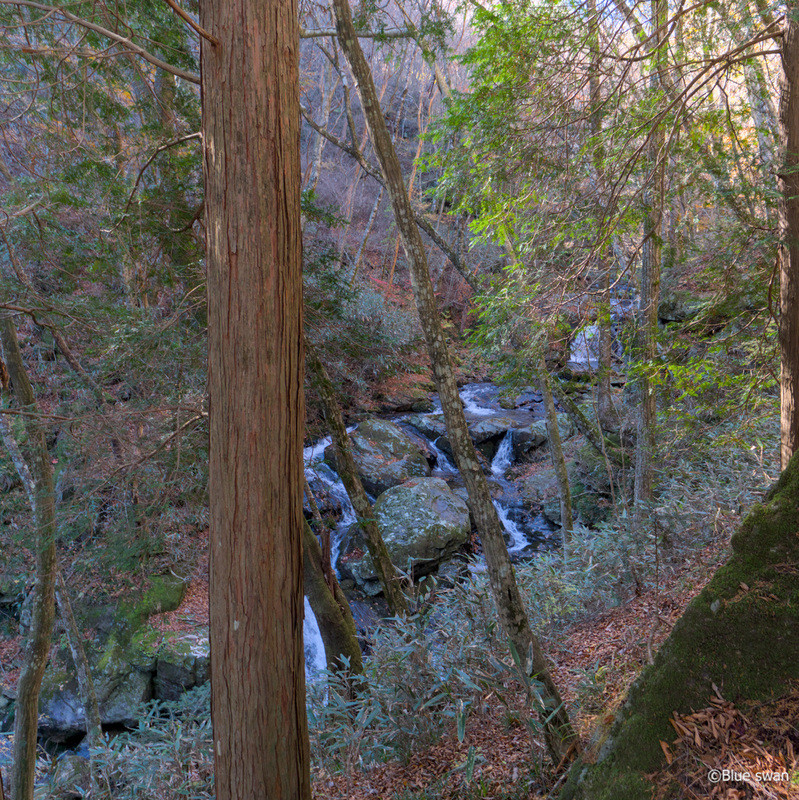
⑰ We've entered Sarugajyo Valley. This is Senzaru Falls.
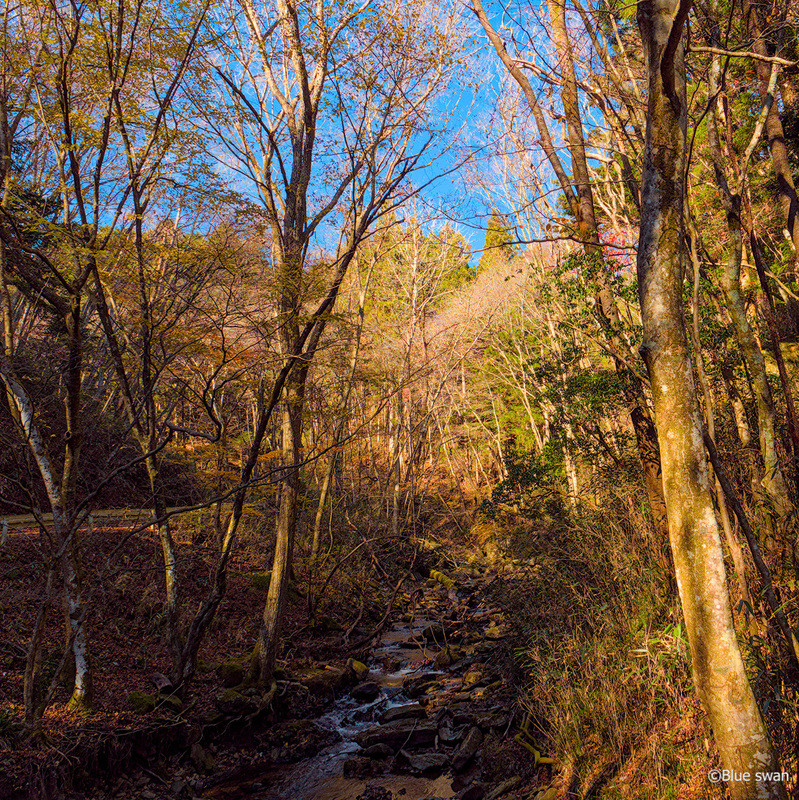
⑱ This is the scenery upstream seen from Senzaru Bridge at the end of Sarugajyo Valley. Now, we'll turn back and head home.
Last year, in 2022, we went to Hananuki Valley. I wrote about that trip in Chapter 240.
This year, in 2023, we went to Hanazono Valley. There is no parking lot there, so we first visited Hanazono Shrine along a tributary of the Hanazono River, where there is a parking lot. Afterwards, we appreciated the autumn leaves of Hanazono Valley from the car window.
The Hanazono River originates from Kameyaji Wetland(亀谷地湿原), which is located between Mt.Eizomuro (栄蔵室 882m) and Mt. Hanazono (798m), and forms a 4km V-shaped valley called “Hanazono Keikoku(Valley)” near Hanazono Shrine.
There is "Yoshiro Falls (与四郎の滝)" here. At the upper reaches of Hanazono Valley, the tributary Sarugashiro Valley joins, and this is also a famous spot for waterfalls and autumn leaves, so we decided to extend our trip to Sarugashiro Valley.
Mt. Eizomuro (882m) is the highest mountain in Ibaraki Prefecture, surpassing Mt. Tsukuba (876m).
The word “Hanazono'' in “Hanazono Shrine” comes from the “Rhododendron colony of Mt. Hanazono''. Hanazono Shrine is said to have been founded in 795.
Every November, the autumn leaves at Hanazono Shrine are illuminated at night.

① This is a tributary of Hanazono River in front of Hanazono Shrine.

② I am in front of Sekizono Waterfall in Hanazono Shrine grounds. If you go to “Okunoin”, which is a 40-minute walk, you can see Nanatsu Falls (60m drop) on the way, but this time I’ll skip it.
※ “Okunoin” is a place located at the back of the main hall where the principal image and spirit statue are enshrined.

③ This is Romon (built in 1792).

④ This is Kaguraden(神楽殿) or Kagura Hall. You can see some lamps decorated with autumn leaves, which are lit at night.
※”Kaguraden” is a building built on the grounds of a shrine for performing “Kagura(神楽)” that refers to a song and dance as an offering to the gods during Japanese Shinto rituals.

⑤ I am in front of a lamp decorated with autumn leaves.

⑥ I am in front of the worship hall, which was rebuilt in 1851. Now, we’ll climb the stairs and head towards the main shrine.

⑦ This is the main shrine, which was rebuilt in 1832.

⑧ I am in front of the main shrine.

⑨ This is an explanation of old trees.

⑩ This is the 600-year-old Koya Maki tree (高野槙) (trunk circumference: 4.5m, height: 30m).

⑪ I am at the base of the Koya Maki tree (Sciadopitys verticillata, or, Japanese umbrella-pine).

⑫ This is the 500-year-old Sanbonsugi (trunk circumference: 7.5m, height: 45m).

⑬ I am in front of the Sanbonsugi.

⑭ We've arrived at Hanazono Valley. Now, we'll climb up the valley by car.

⑮ This is Yoshiro Falls.

⑯ This is Hanazono Valley seen from the top of the bridge.

⑰ We've entered Sarugajyo Valley. This is Senzaru Falls.

⑱ This is the scenery upstream seen from Senzaru Bridge at the end of Sarugajyo Valley. Now, we'll turn back and head home.
